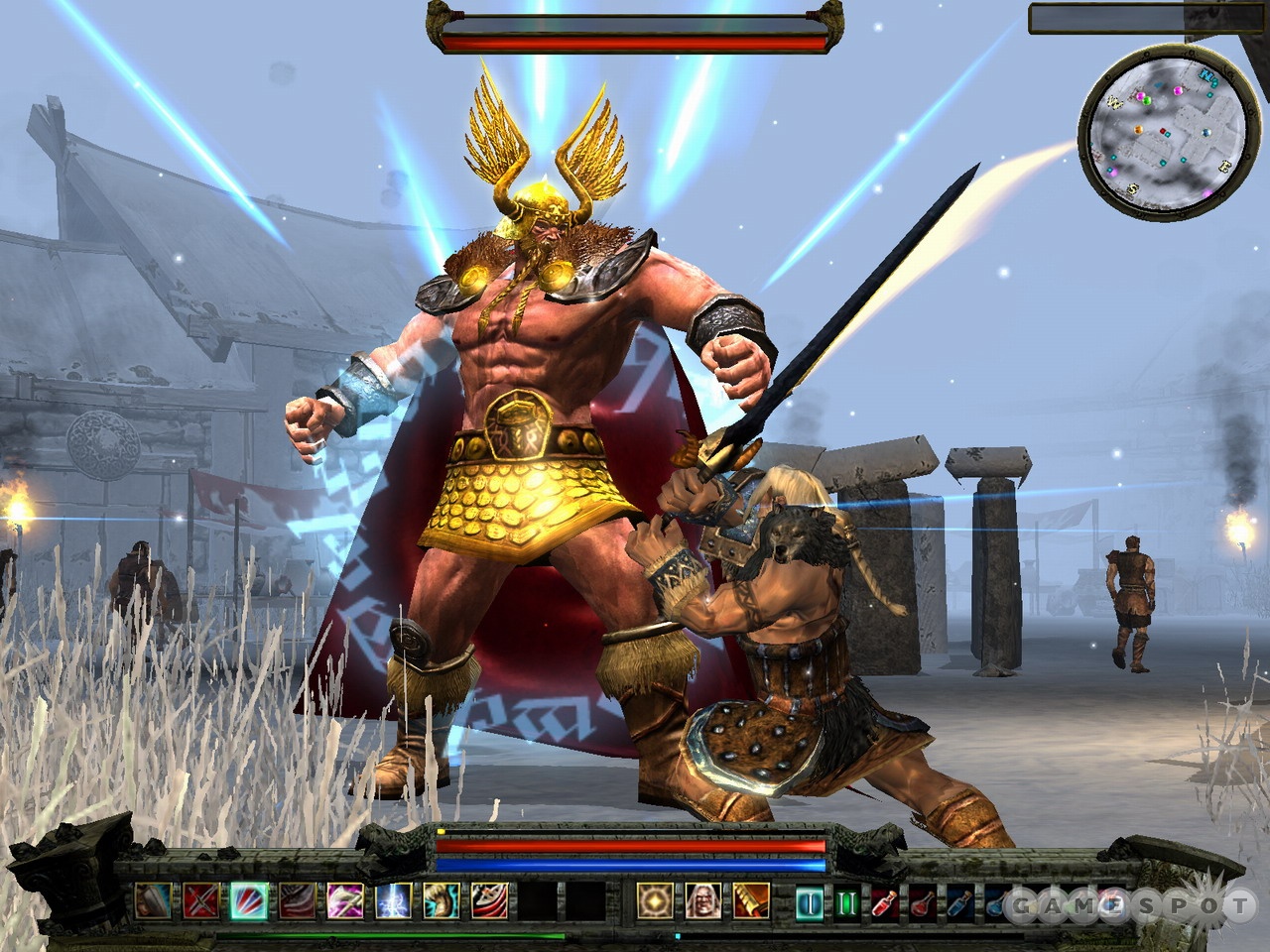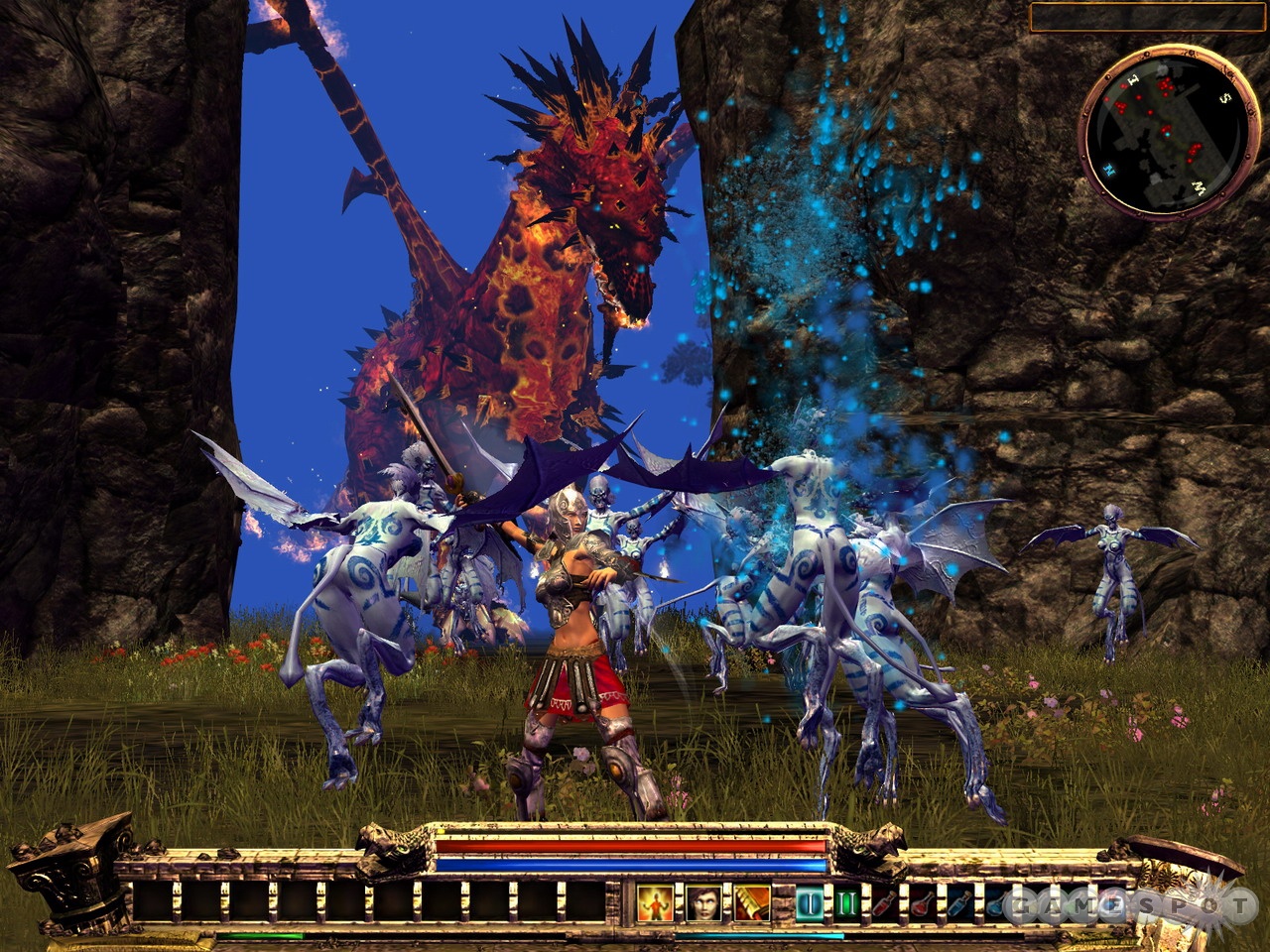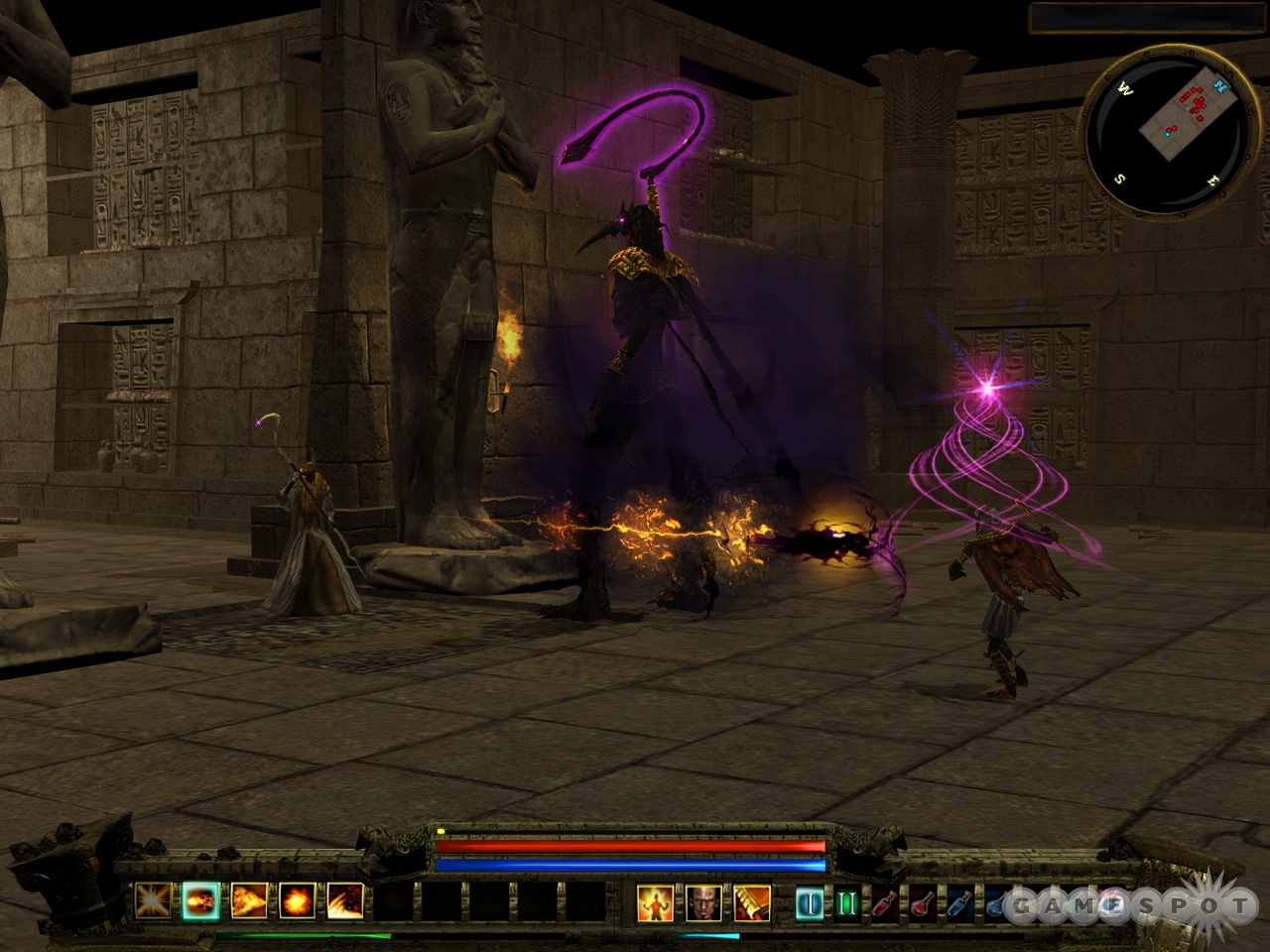Loki Q&A - Story, Setting, and Loot
This hack-and-slash action role-playing game promises plenty of intensity as you romp through numerous mythologies.
Blizzard's classic 1996 game Diablo set the tone for almost every action role-playing game to follow it: Create a hero or heroine, and then run around a virtual world slaying hundreds of monsters and picking the bodies clean of loot and gold. The designers of Loki, an upcoming hack-and-slash action RPG from developer Cyanide and publisher Focus Home Interactive, plainly acknowledge that they were inspired by Diablo. And with Loki, they're hoping to make an incredibly intense action game. For more, we turned to art director Thomas Veauclin of developer Cyanide. Loki ships this August.

GameSpot: Could you give us a brief introduction to Loki? Tell us about how the game plays?
Thomas Veauclin: Loki is a pure hack-and-slash in the true Diablo tradition. Gameplay is frenetic, and from the outset our aim was for there to be total aggression in the fighting. We've found that all the latest claimants to the hack-and-slash genre were seriously lacking in combat intensity.
GS: Though it looks like a fantasy game, Loki seems to be based on a number of real-world mythologies, including Aztec and Scandinavian lore. Tell us about the game's story and setting.
TV: Seth, who is the Egyptian god of chaos, has been brought back to life. Seth's aim is to conquer the world and he sets out to find allies across other mythologies: Greek, Aztec, and Norse. To do so, he has also found the way to pass between worlds, thus breaking an age-old agreement between the gods of the different pantheons. The player is given a mission by the gods to track and destroy Seth.
GS: Who are the main heroes in the game? What are their abilities? How do you customize them as they become more powerful?
TV: Each mythology has its given hero or heroine. From the Egyptian and Norse worlds there are two males and from the Greek and Aztec worlds there are two females. Each has a distinct set of skills which are granted by the three gods that each worships. For example, the Greek heroine worships Ares, Athena, and Artemis. From her gods, she gets the skills to lay devastating traps and fight from a distance with bows and disks. The Egyptian worships Ra, Seth, and Horus, who confer on him power of magic, chaos, and fire. Each deity's skill tree is different, and only one can be worshipped at a time. Moreover, it is possible to worship no god at all in order to build up experience. So the player will have to keep making choices throughout the game in order to progress the character as he sees fit.
From a visual point of view, characters evolve by picking up items--clothing, weapons, armor, runes, and, of course, gold. There are literally thousands of possibilities offering the gamer plenty of opportunities to personalize the onscreen character. There is little likelihood of the same two characters resembling each other.
GS: We understand that Loki is being billed as an "open-ended role-playing game." Most action RPGs are very linear in nature, so what does the open-ended gameplay let players do? How does this translate into a better gameplay experience?

TV: We would not compare Loki to a classic role-playing game. The game is pure hack-and-slash.
Loki is a mixture of linear and nonlinear. The "linear" comes from the fact that there is a framework to each chapter with quests that have to be completed. It's "nonlinear" because the four chapters (mythologies) can be played in any order. Once the player gets through the opening chapter (the mythology of the chosen hero) he ends up at a place called the Thresholds of Time. From there he can go in and out of any mythology. That means he could do a few Aztec levels, then return to the Thresholds of Time and pass into the Norse world. There are no constraints, save that all levels must be completed before the final outcome can be played out. And even at the end there are several possible outcomes.
GS: How long does it take to play through the single-player campaign? How much replay value will the game have? How different will the game be if players decide to replay using an entirely different character?
TV: We estimate about 35 hours for one level of difficulty. So with three levels, we're talking about 100 hours. The whole scenario is built around completing the three levels of difficulty and the only way to fully understand the story is to go through to the end. Each chapter ends with a confrontation with a boss, but the real battles are at the end of the game.
We integrated the notion of replay value from the outset, so most levels are randomly generated. We felt that randomly generated levels were preferable to a level editor, for example. We are more in the Diablo mold than Titan Quest. You soon get bored with playing a game in unchanging decors. Moreover, a player always has the possibility when restarting a game to continue on his road or to start again, keeping his hero's current level and inventory.
GS: A popular aspect of action RPGs is being able to collect and sell lots of loot. What sorts of weapons and armor are there in the game? Can you craft your own?
TV: The player will be spoiled from a weapons and armor point of view. There are 15 types of weapon, each broken down into 41 levels. Weapons can be broken down into their constituent parts and reassembled to make new weapons. Moreover, they can be melted down to reclaim the raw material (17 types) or overlaid with a new metal or magic rune to increase power. The associated 3D image reflects the change. The same goes for armor, of which there are five types, broken down into 41 classes. The possibilities are endless. Of course, each hero has his or her specific weapons and armor sets, which are in harmony with the look of the onscreen character, and each has unique items of great power.
We put a lot of work into the game's "forge," where all the assembly/disassembly and overlaying takes place. The results (visual and characteristics) can be viewed before the player confirms an operation.

GS: Let's talk about online play. What multiplayer options will Loki offer? Co-op? Does the difficulty ramp up with more players? What about competitive modes?
TV: There are four multiplayer modes: Co-op, duel, battle, and challenge. Co-op allows up to six players to live the Loki adventure together. Gameplay is very similar to solo mode. Duel allows one-on-one fights in the Loki arena. If desired, results can go toward an online ranking system. Battle allows team-versus-team combat with up to four players on each side. Challenge allows players to take on some of Loki's monsters in configurations that do not exist in the solo mode. Difficulty evolves as the number of players grows.
GS: What was the inspiration for Loki, and when did work on the game begin? Where is it currently at in development?
TV: Inspiration really came from the absence of a Diablo III. It frustrated a lot of people at Cyanide, so we thought that there must be a lot of people out there who felt as frustrated as us. The game is being released as I speak. From start to finish, it took two years.
GS: Finally, is there anything that you'd like to add about Loki?
TV: It's been hard work and there was a massive learning curve. However, it's great to be able to sit down at the end of it all and look at Loki and say, "We did that."
GS: Thank you, Thomas.
Got a news tip or want to contact us directly? Email news@gamespot.com
Join the conversation